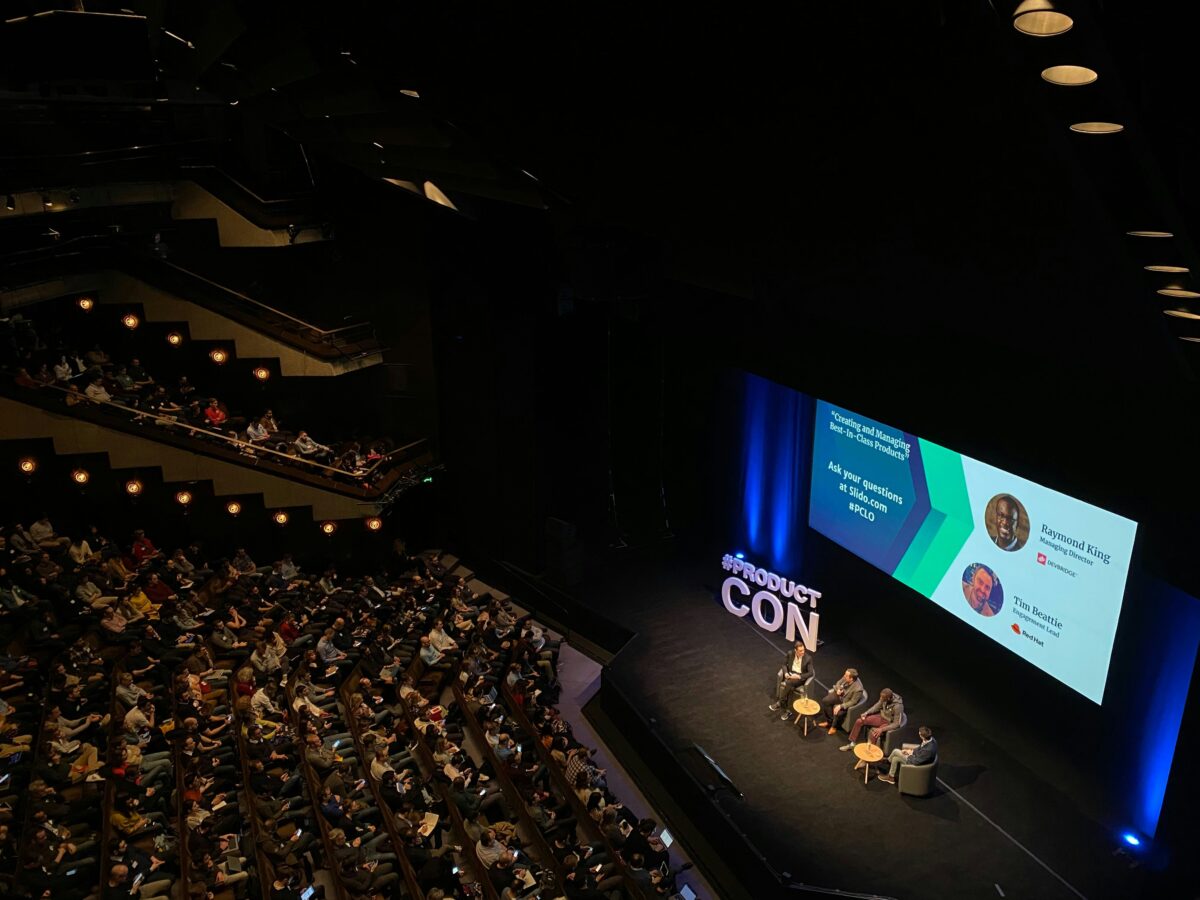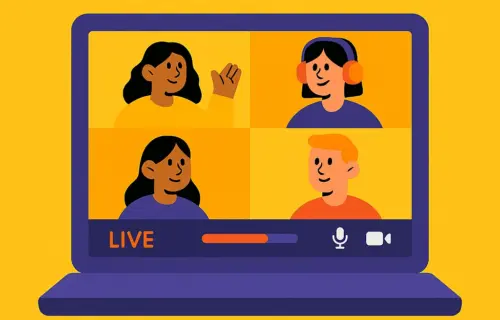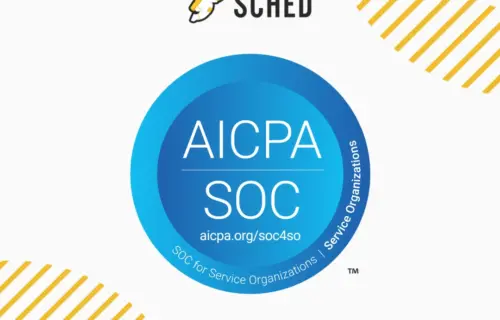Summary
- Pre-event engagement strategies: Learn how to inspire and engage your panel discussions before your pane discussions start – boosting satisfaction and professional development.
- Clear objectives and audience understanding: Discover the importance of establishing clear goals, understanding your audience’s expectations, tailoring content, and selecting suitable guests for your panel discussions.
- Effective panelist selection: Gain insights into choosing knowledgeable, engaging, and communicative panelists to create a balanced and dynamic discussion.
- Creating excitement: Find out how to generate excitement before your panel discussions with teaser videos, exclusive content, and interactive social media campaigns.
- Engaging format and moderator role: Learn about balancing structure with flexibility in your panel format and the critical role of a skilled moderator in keeping discussions focused and interactive.
- Audience participation techniques: Explore methods to encourage active audience participation through dynamic Q&A sessions, interactive polling, and event apps.
- Post-event engagement and feedback: Understand how to maintain engagement after the event with on-demand content, follow-up communications, and leveraging feedback for future panel discussions.
Here’s a secret. If you only look to engage your audience during the panel discussions themselves, then your attendees are already being short-changed.
By inspiring and engaging them before and after your panel discussion, then it won’t just lead to great event satisfaction, but better professional development.
And, of course, there is a load of top tips you need to utilize during your panel discussions too.
When you read on, you’ll discover these actionable tips for engaging your audience – and ultimately boosting their professional development experience. So dive in!
Establishing clear objectives for your panel discussions
Table of contents
- 1 Establishing clear objectives for your panel discussions
- 2 Selecting and Preparing Your Panelists
- 3 Creating excitement before your panel discussions even start
- 4 Designing an engaging format for your panel discussions
- 5 Role of the Moderator in Enhancing Audience Engagement at panel discussions
- 6 Encouraging Active Participation from the Panel Discussion Audience
- 7 Building engagement long after your panel discussions are over
- 8 Gathering and Implementing Feedback for Future Panel Discussions
- 9 The takeaways
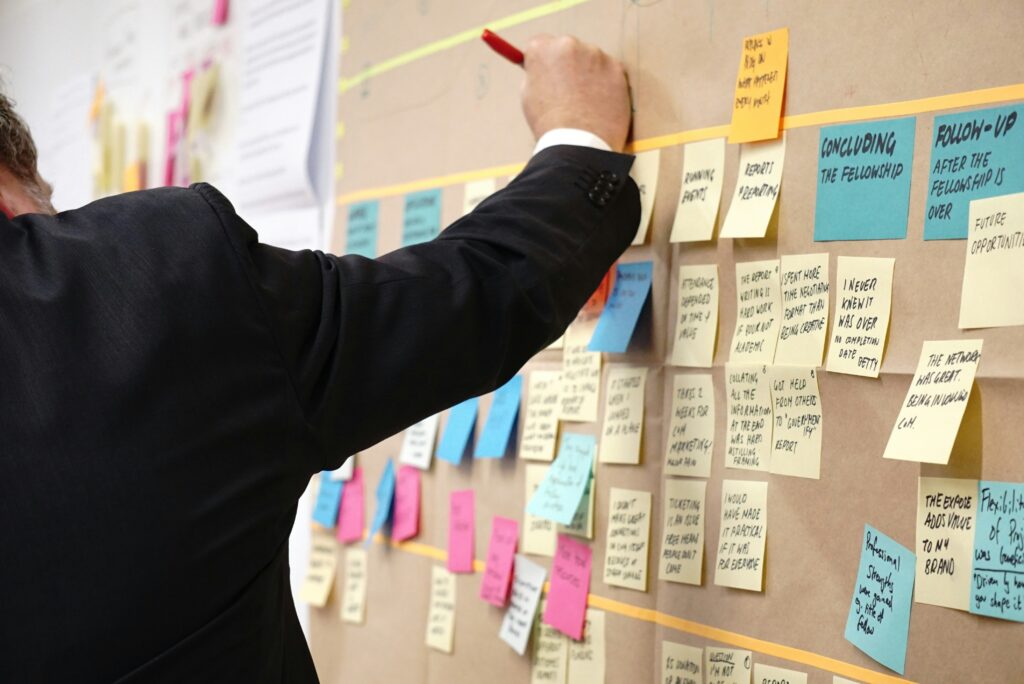
Identifying the goal of the panel
To ensure successful panel discussions, ask yourself what you want to achieve.
This begins with identifying the main topic or theme to be covered. Are you looking to…
- Educate the audience?
- Spark debate?
- Share diverse perspectives?
- Inspire action?
For instance, panel discussions at a professional development conference might aim to…
- Enhance knowledge about the latest industry trends
OR
- Provide actionable strategies for career advancement
Defining these goals early not only helps in selecting suitable panelists but also in structuring the discussion to meet these objectives.
BONUS ADVICE – Make easy work of this with our guide on setting the right goals for an event!
Understanding your audience’s expectations
Knowing your audience is key to tailoring the panel discussion to their expectations and needs.
It’s important to consider who will be attending. This understanding can significantly influence the content of the discussion and the choice of panelists:
- Are they industry professionals seeking advanced knowledge?
- Are they newcomers looking to learn the basics?
For example, if the majority of the audience are IT professionals, the discussion could focus more on technological advancements, not basic IT skills.
Gathering this data might involve pre-event surveys or analyzing past event feedback, ensuring the panel resonates well with the audience.
Infiltrating your target audience
Understanding your audience is easier said than done. However, you can become a native expert if you follow these hot tips from Lean Marketing:
- Trade journals: Subscribe to industry-specific publications to stay updated on trends and insights.
- Online chatter: Monitor where your audience interacts online—social media groups, forums, and mailing lists.
- Industry associations: Join these groups to gain insider information and expand your network.
- Blogs and podcasts: Follow high-authority blogs and listen to industry podcasts to understand audience preferences and pain points.
By embedding yourself in these spaces, you’ll gather invaluable information to engage your audience effectively at panel discussions.
TOP INFILTRATION TIP – You can learn loads of event planning lessons by attending other events!
Clarifying key takeaways for attendees
It’s one thing for you to understand what you’re trying to achieve. Attendees should have a clear understanding of what they gain from the session. If you don’t make it clear to your attendees what’s in for them, then they will not turn up.
Clear, actionable takeaways are crucial for a memorable panel discussion. Whether it’s…
- Practical advice
- Innovative ideas
- New perspectives
Selecting and Preparing Your Panelists
Say Bye to Back-and-Forth Emails: Manage Speakers with Sched from Sched Support on Vimeo.
Criteria for choosing guest speakers for your panel discussions
- Expertise in the discussion topic: They should possess deep knowledge, extensive experience, or unique insights that contribute significantly to the conversation.
- Communication skills: Effective panelists are not only knowledgeable but also skilled communicators. They should be capable of conveying complex ideas clearly and concisely, making the topics accessible and engaging for the audience.
- Audience engagement: Look for individuals with a track record of engaging in presentations or discussions. The ability to resonate with the audience is crucial for maintaining audience interest and participation.
- Balanced composition for panel discussions: Well-rounded panel discussions should include diverse viewpoints, which can lead to richer discussions and a broader range of insights.
DEEP DIVE – You can uncover more tips on how to pick the best panel speakers here!
Pre-panel Briefings and Expectations
- Setting Clear Expectations: Communicate the goals and expectations of the panel discussion with potential panelists well in advance.
- Pre-panel Coordination: Organizing a pre-panel meeting, whether it’s a brief session before the event or a more formal discussion, can significantly enhance the panel’s effectiveness.
Book the best panelists – easier than ever – with our Call for Papers tool
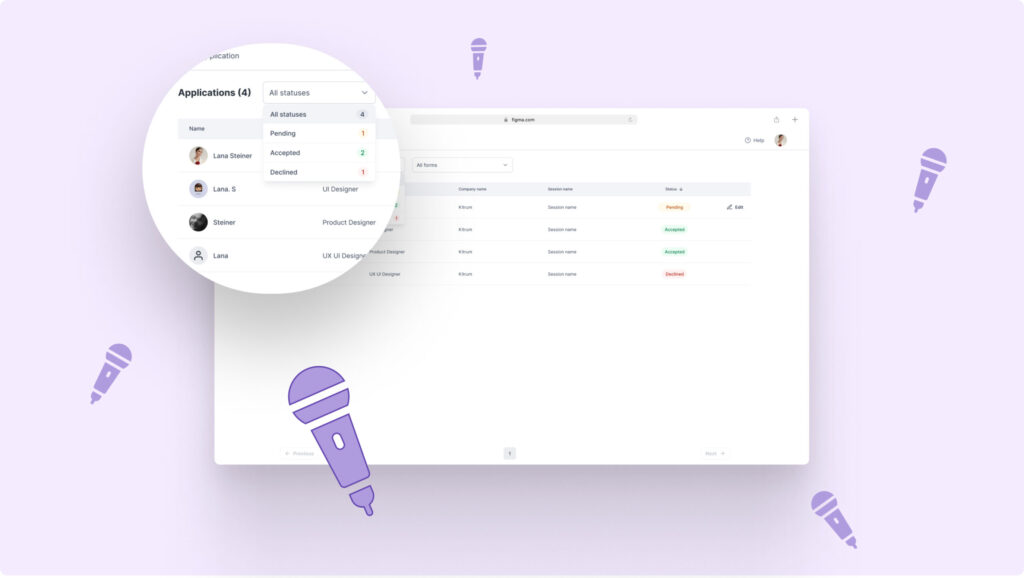
Effortlessly curate your ideal lineups for panel discussions with our NEW Call for Papers tool.
Start leading the conversation in your field today. Elevate your event’s prestige and offer attendees unparalleled insights by connecting with the brightest minds globally.
- Effortless selection: Quickly pinpoint the top speakers your audience craves. Let our technology do the heavy lifting, saving you precious time.
- Expert magnet: Attract industry leaders to enrich your event with their insights, ensuring your audience enjoys premium content effortlessly.
- User-friendly interface: Build a unique, professional-looking call-for-speaker system without needing to be a tech expert. This is tech for non-techy people.
HOWEVER, The rollout of our Call for papers is in high demand.
Creating excitement before your panel discussions even start
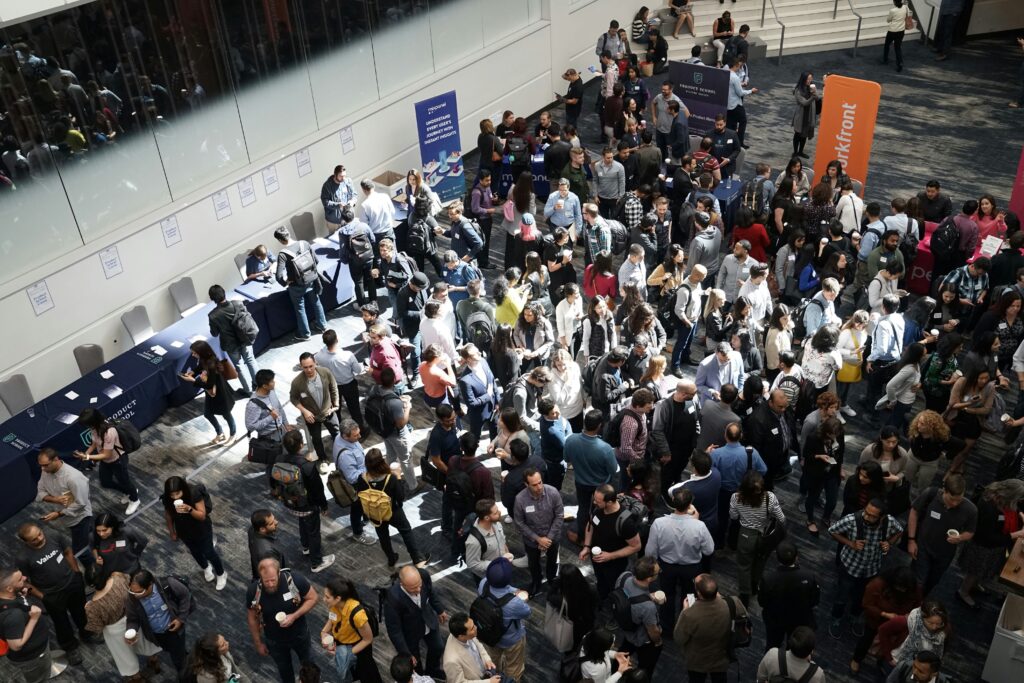
You are most engaged at events you’re excited to go to. Events you look forward to and think about. If you end up at an event you forgot existed because you got a calendar reminder, you’re not going to be that engaged going in.
- Teaser videos:
-
-
- Share short, exciting teaser videos featuring the panelists discussing key topics or sharing a sneak peek of the discussion.
- Example: A week before a tech conference, a short clip of a renowned tech expert hinting at a major announcement can generate buzz.
-
- Exclusive pre-event content:
-
-
- Provide exclusive content to registered attendees, such as an e-book or a behind-the-scenes look at the panel preparation.
- Example: A marketing summit could offer early access to a whitepaper by one of the keynote speakers, giving attendees a taste of what’s to come.
-
- Interactive social media campaigns:
-
-
- Use polls, Q&A sessions, and live streams on social media to engage your audience and let them participate in shaping the event.
- Example: A film festival might run a poll asking which films or directors attendees are most excited to see, building anticipation and community involvement.
- EXTRA – MORE ways to promote an event on social media!
-
- Personalized email campaigns:
-
-
- Send personalized emails with intriguing details about the panelists and the topics they’ll cover, tailored to the interests of different attendee segments.
- Example: For a healthcare conference, emails could highlight a particular doctor’s groundbreaking research relevant to the recipient’s field.
- EXTRA – Email subject lines to drive up attendance!
-
- Countdown and reminders:
-
-
- Use countdowns on your event website and regular reminder emails that build excitement as the event approaches.
- Example: A countdown timer on the homepage of a music festival, combined with weekly reminders featuring different artists, keeps the event top of mind.
-
- Collaborative content creation:
-
-
- Invite potential attendees to contribute questions or topics they’d like to see addressed during the panel discussion.
- Example: For a writers’ workshop, collect and feature attendee-submitted writing prompts that will be discussed by the panel.
-
- Influencer and partner promotions:
-
- Leverage influencers and event partners to promote the event on their platforms, creating a wider reach and more excitement.
- Example: A fashion panel might partner with popular fashion bloggers to share exclusive content and generate hype.
Designing an engaging format for your panel discussions
Balancing structure and flexibility
When designing a panel discussion, it’s crucial to find the right balance between having a structured agenda and allowing flexibility for spontaneous interaction.
Start by defining clear objectives and a draft agenda, which should be communicated to all panelists and attendees beforehand. This sets expectations and provides a roadmap for the discussion.
HOWEVER
Remain adaptable; allow the conversation to flow naturally and deviate from the script if it benefits the audience’s engagement.
For instance, if a particular topic resonates with the audience, it might be worth exploring in more depth, even if it means adjusting the timeline slightly.
BONUS ADVICE – Learn how the Outdoor Writers Association of America incorporates panel discussions into their wildly successful conferences!
Role of the Moderator in Enhancing Audience Engagement at panel discussions

Traits of an Effective Moderator
Good panel discussions need a good moderator. And a good moderator possesses…
- Deep topic knowledge.
- Excellent communication abilities.
- An engaging personality.
Before the event, they should…
- Invest time in researching the panel topic and the backgrounds of the panelists.
- craft relevant and stimulating questions and send them to panelists beforehand.
Keeping the Discussion Focused
A moderator does more than ask questions. They conduct the discussion flow and focus. They achieve this by:
- Setting Clear Expectations: Outlining the discussion’s goals and structure to panelists beforehand.
- Time Management: Keeping an eye on the clock to ensure all topics receive adequate attention without overrun.
- Balancing Participation: Encouraging quieter panelists to contribute while tactfully curtailing those who monopolize the discussion.
Facilitating Interaction and Q&A Sessions
Good moderators excel in enhancing audience participation. They use tools like live Q&A sessions and real-time polls to involve the audience directly in the discussion. They also:
- Summarize Key Points: Highlighting takeaways during the discussion to keep the audience engaged.
- Manage Q&A Effectively: Directing questions to appropriate panelists and ensuring a smooth flow of the Q&A session.
Encouraging Active Participation from the Panel Discussion Audience

Techniques for Keeping the Audience Involved
- Dynamic Q&A Sessions: Implement live Q&A sessions to allow real-time interaction between the audience and the panelists.
- Interactive Polling: Regularly use polls to gauge audience opinion and steer the discussion towards topics of interest.
- Gamification: Incorporate elements of play, such as trivia games or digital scavenger hunts, which not only entertain but also foster learning and interaction.
- Tossable Microphones: Utilize tossable microphones to facilitate a smooth flow of conversation across large rooms, making it easier for attendees to contribute without the awkward wait times.
- Event Apps: Use event apps – like Sched’s – for live for live Q&A and polling. These tools allow attendees to submit questions anonymously, increasing participation from those who may be too shy to speak up.
- Social Media Integration: Encourage attendees to post about their experience using event-specific hashtags. This creates a dynamic feed that can be displayed around the event venue or on the event website.
- Virtual Photo Booths: For hybrid events, virtual photo booths can offer online attendees a fun and interactive way to feel connected to the event, providing them with branded keepsakes to share on their social networks.
Encouraging Questions and Discussions from Attendees
As we just said, not everyone is comfortable talking in front of a crowd. So anonymous questions on an event app are great for yielding hidden gems.
However, if you just create a welcoming environment, you’ll have more people ready and eager to start firing questions.
Here’s how to encourage more active participation:
- Immediate Interaction: Start the event by asking simple, ice-breaking questions to warm up the audience. Gradually increase the complexity of the questions to keep the attendees intellectually involved.
- Encourage Written Questions: For those who might hesitate to speak up, provide options to submit questions in writing either through event apps or on slips of paper. This method can help gather more diverse input from the audience.
- Breakout Sessions: Organize smaller breakout groups to discuss specific topics in depth. These sessions can be more intimate and encourage quieter attendees to participate.
BONUS ADVICE – The best hacks for mastering in-person events!
Building engagement long after your panel discussions are over

Just because your event is over, that doesn’t mean it has to end. With Sched, you can keep your event live, even when the event is over.
This allows your attendees to continue to browse the schedule, sessions, profiles, and content at their leisure.
This allows them to relax and enjoy your event, in the moment, knowing all the valuable information will be available to them later.
On-Demand Content
With Sched, you can also on-demand content, such as lecture slides, recordings, and documents. This is invaluable for professional development.
It relieves attendees from the stress of trying to write down everything your speaker says. They can watch and read the materials at their leisure, making it a lasting resource.
Gather Feedback and Act on It
Ask your audience for feedback on the event using surveys or social media polls. Act on their suggestions, and let them know about the improvements you’re making.
According to SurveyMonkey, 83% of people appreciate when their feedback is acknowledged.
BONUS ideas to foster good relationships and engagement after your panel discussion
- Share highlights and key takeaways: Send a follow-up email with a recap of the discussion, including key points and memorable quotes. Share links to relevant articles or resources mentioned during the panel.
- Use social media strategically: Post snippets, quotes, and video clips on social media. Tag the panelists and use a dedicated hashtag to keep the conversation going. Social media posts with videos receive 48% more views, according to Hootsuite.
- Host a Q&A session: Organize a live Q&A session with the panelists a week after the event. Platforms like Instagram Live or LinkedIn Live are perfect for this, allowing the audience to ask follow-up questions and dive deeper into the topics discussed.
- Create a community: Build an online community around your event using platforms like Facebook Groups or LinkedIn Groups. Encourage attendees to join, share additional content, and engage regularly.
- Leverage email newsletters: Send regular newsletters with updates, additional resources, and upcoming events. Keep your audience informed and engaged. Mailchimp reports that newsletters have an average open rate of 21.33% in the professional services industry.
- Plan your next event: Announce your next event while the excitement is still high. Offer early bird registration or exclusive perks for previous attendees to keep them looking forward to future engagements.
Gathering and Implementing Feedback for Future Panel Discussions

Gathering feedback is essential to improving your events. Using Sched’s robust event reporting and analytics tools, you can easily collect insights from your attendees.
Remember, your attendees’ voices are your most valuable resource. By actively listening and making thoughtful changes based on their feedback, you’re showing that you value their experience. And in turn, they’ll be more likely to return to your future events.
Feedback surveys: make sure to send out feedback surveys right after the event while it’s still fresh in everyone’s minds.
- Sched allows you to create customized surveys that target specific sessions or overall event experiences. You can ask questions like,
- “What did you enjoy most about this panel?” or
- “How can we improve for next time?”
BONUS – Check out these awesome post-event survey questions for your panel discussions!
Analytics dashboard: Analyzing this feedback is simple with Sched’s analytics dashboard. It compiles all the responses and presents them in an easy-to-read format.
- You can see trends, and common suggestions, and even identify the most and least popular sessions. This data is gold for planning your next event.
Implementing the feedback: Don’t stop at collecting data. Implementing the feedback is where the real magic happens.
- If attendees suggest more interactive Q&A sessions, plan to include more time for audience questions in future panels.
- If they want more diverse topics or speakers, start brainstorming now and reach out to potential panelists early.
Revolutionize Your Event Analytics: Get the Data Insights You’ve Always Wanted from Sched Support on Vimeo.
BONUS ADVICE – Steer clear of these top 7 event reporting pitfalls – to keep your feedback implementation strong!
The takeaways
Well, there you have it. You now have the power to supercharge engagement at your panel discussions.
From building excitement before,
To fostering amazing discussions during,
And stoking the benefits long after!
Make sure your attendees experience better panel discussions by trying Sched for free, now!
